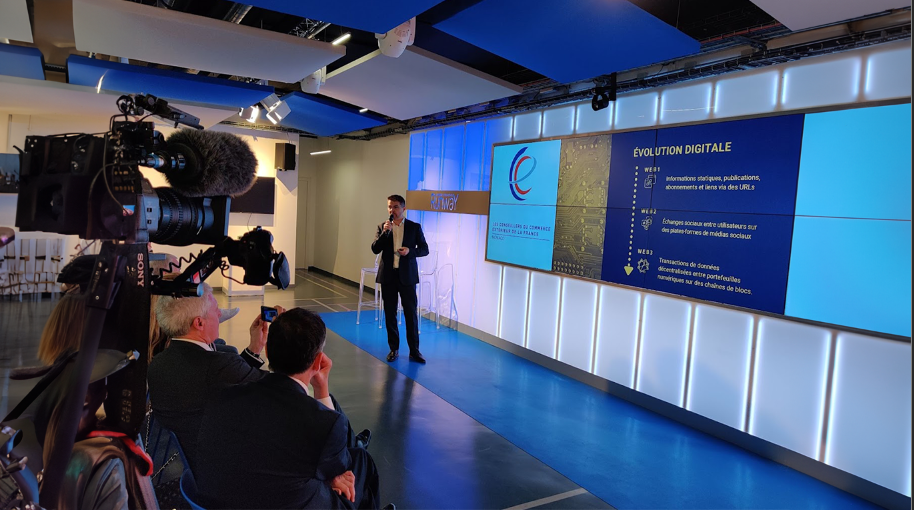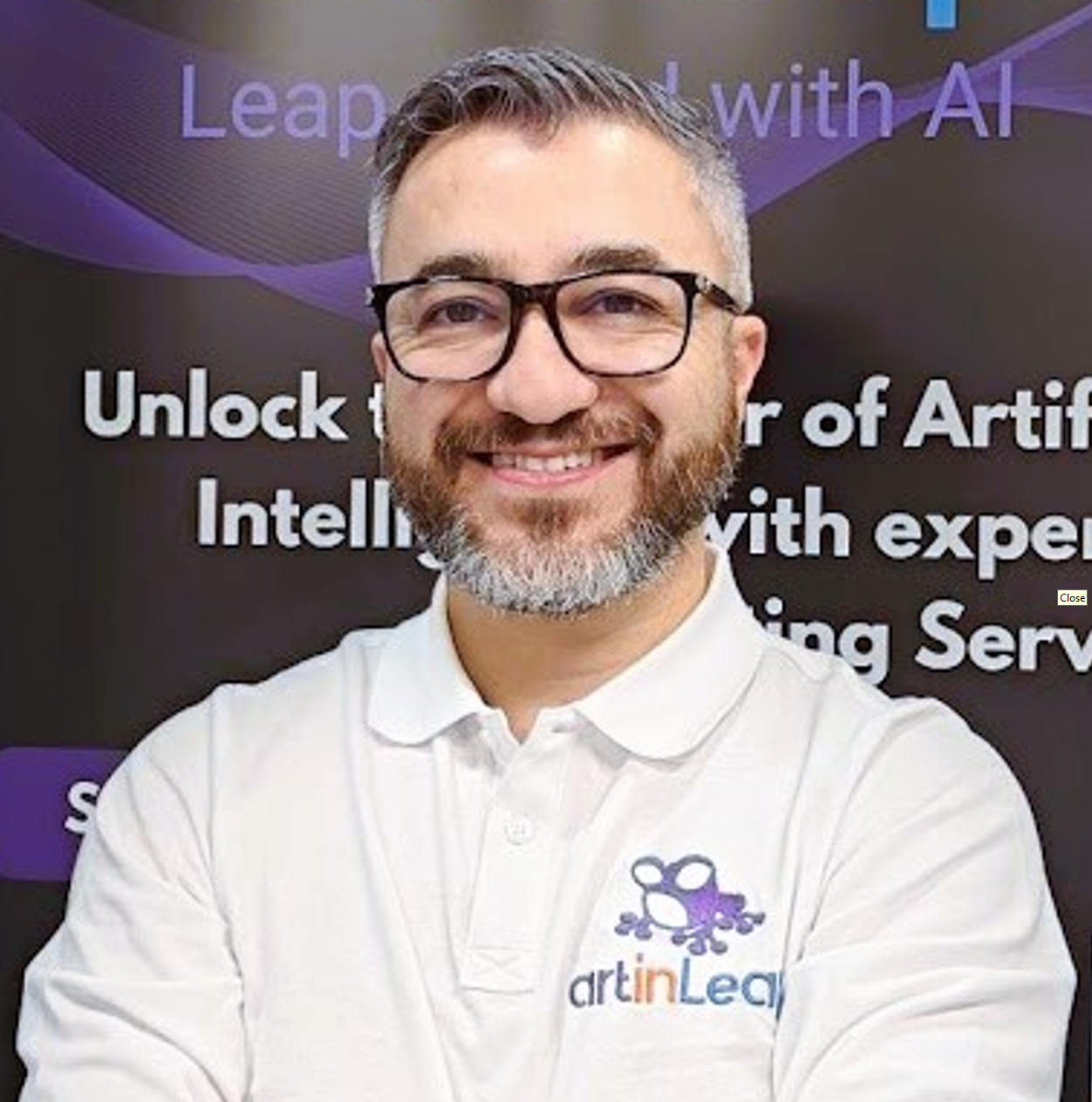With over 20 years of experience in the digital field, Baccana Digital Consulting is a Monaco-based agency specializing in e-commerce website design, SEO, and digital marketing. Baccana offers a full range of digital transformation services, including custom development, Web3, secure cloud solutions, and virtual reality. With a collaborative and personalized approach, Baccana Monaco supports clients from a wide variety of sectors, ranging from yachting to tourism, and from healthcare to consulting, both locally and internationally. Their partnership with Monaco Cloud also allows them to offer sovereign and secure storage solutions, particularly for sensitive data, such as health data.
Can you tell us about your professional background and the story of Baccana Monaco?
I’ve had several professional lives, with IT constantly pushing me to question myself. I dove into the field in the late ’90s. It’s a domain that constantly changes—there’s never really a dull moment. We came from San Francisco, where we created a Software as a Service (SaaS). We experienced the good years of the late ’90s, the dot-com bubble of 2000, and the dawn of social media… we lived it!
I participated in the SEO SAMBA adventure, initially a software for SEO, which was later adopted by franchise networks. It still exists, but I relocated to Monaco ten years ago. The company is now run by a team based in the United States, while I decided to settle back in Monaco. Having traveled extensively, Monaco became a natural choice with the same cosmopolitan openness I enjoyed in the United States, Brazil, or England. That’s how Baccana was born, about ten years ago.
We remain in the IT field, assisting our clients in their digital transformation, both in Monaco and abroad, in the U.S., Europe, and Asia, across various sectors. We work with enterprise software, e-commerce sites, applications, and virtual reality. Baccana consists of six people in Monaco, and we have also maintained our offices in Eastern Europe despite the geopolitical situation, as well as a small office in Chandigarh, India, with six collaborators. I also work as a consultant for companies, mainly in India, helping them understand the Western market. India and the West are often perceived as two entirely different worlds, which is somewhat true on both sides. My role is to create a bridge, advising companies in IT, Edtech, and railway engineering.
What unique aspect of your sector prompted you to integrate AI, and how has it transformed your operations?
We’re in IT, Web, and VR… It’s important to remember that we operate in an industrial sector that didn’t exist 30 years ago. It’s surprising to say this today, but it’s a reality. Joel Blesson and David Culot, my collaborators and friends, started before me, back in the 1990s. We’ve experienced many evolutions and revolutions, as well as disappointments. Technologies that everyone believed in disappeared overnight. To remain competitive, you have to be curious and constantly test new things.
Regarding AI, we first tested it in 2018–2019, but it ended in failure. Looking back, the mistake we made at the time was treating AI as a turnkey solution when it’s more of a tool. We used it for content curation for social media, based on parameters related to luxury and mountains. The problem was that the segmentation quickly went off course, generating inappropriate associations like “psychiatry in the mountains,” which wasn’t well received by our clients. So, we paused the project due to insufficient granularity.
With the arrival of ChatGPT 4, we relaunched our tests, this time integrating AI as a tool, not a complete solution. We quickly noticed significant time savings, particularly in creating targeted content. Adoption was swift, both for us and the market at large. AI doesn’t do the job better than we do, but it allows us to produce an exploitable first draft almost instantly.
The time saved is the driving force behind AI usage at Baccana. It’s now a tool like any other, alongside Photoshop, CMS, Office 360, or the programming languages we use. We’ve also deployed it for code validation, not to write code for us, but to test and verify. Sometimes, when faced with a bug, it’s enough to pass the code to AI to get the solution.
Before adopting AI, it’s essential to define the areas where we need it and then test the available tools, comparing free and paid solutions.
How do you manage the issue of data storage?
The main challenge is linked to the U.S. Patriot Act and Cloud Act: any U.S.-based technology or service involves the potential for our data to be accessible to the U.S. government. In Monaco, we have Monaco Cloud, a local storage solution suited for sensitive data, especially in the medical sector. I highly recommend reading Frédéric Pierucci’s book, The American Trap, which recounts his experience as a former executive of the French company Alstom. I met him during a presentation of Monaco Cloud.
AI saves time, but it consumes a lot of server resources, particularly GPUs. This is a problem in Monaco, where these resources, already scarce, are mainly used by the government, leaving little room for AI at the moment. In the absence of sufficient local GPUs, we rely on U.S. solutions (AWS, Azure, Google), but then we fall under the Patriot Act. We must be cautious, but it depends, of course, on the data being processed. In our case, we use AI as a tool, and we don’t store sensitive data. However, at the B2B level, this issue may arise.
What areas of AI application have you explored?
We use it for everything related to written content: SEO, creating targeted content for SEO, relying on ChatGPT 4.o. For images and media, we use Midjourney, Adobe Fireflies, or DALL-E. In virtual reality, AI is becoming more and more prominent.
For voiceovers, AI saves us a tremendous amount of time. Personally, I sometimes do French voiceovers for projects with partners in Ireland. With ElevenLabs, it’s possible to keep my voice but have it speak perfect Greek or Arabic, for example. It’s mind-blowing and always validated by native speakers. It’s a fantastic tool, but it must remain under human control.
We also use specialized AIs to streamline “scraping” projects, which means extracting vast amounts of data from the web and transforming them into optimized databases for more efficient exploitation. Similarly, we use another AI to create summaries and action plans directly from online meeting videos.
It’s in these particularly time-consuming areas that AI has the greatest impact on our daily work efficiency.
How did you overcome the cultural and human challenges of integrating AI?
After 30 years in IT, we’re used to being agile and open-minded. In our team, there’s a mix of generations, with Gen X members in their fifties and Gen Z members in their twenties. The connection between us came naturally, as we, the “older ones,” really embrace a logic of transmission. My eldest son works with us, as do my friends David and Joël. The younger members didn’t hesitate to embrace AI, listening to podcasts, and sharing their knowledge with our clients, partners, and us “old-timers.”
There wasn’t any significant challenge; the transition was swift and organic. However, on the client, partner, and peer side, the ethical question has often been raised: Will AI destroy jobs? The reality is that it replaces some jobs, as in the case of voiceovers for our VR projects. However, this is the history of humanity: jobs evolve. Before running water, there were well-diggers; before electricity, there were lamplighters. With AI, new opportunities and jobs are emerging. In July, I traveled to Hyderabad, India, and visited T-Hub, the world’s largest incubator, with between 450 and 650 startups incubated at any given time, 25% of which are in the AI field.
AI should be seen as an evolution rather than a sudden revolution. The disappearance of old jobs is gradual, making room for innovations.
Have you noticed positive changes within the team or even among your clients?
The introduction of AI has really created excitement within the team, a bit like discovering a new toy. The enthusiasm is palpable, and that’s exactly the mindset we need to maintain. The team quickly realized that with these tools, they could accomplish long and/or complex tasks in record time. AI also brings a playful aspect, making us laugh at times, like when my AI-generated voice speaks perfect Greek or Arabic. It opens new horizons and brings a breath of fresh air because the results are immediate, and often impressive. It’s then up to us to add our personal touch.
This tool is empowering for the team, but we must always maintain a sense of proportion. We regularly ask ourselves: how far can we go in using these technologies? The boundary is still blurry because AI development is progressing so quickly that the limits are constantly being pushed.
On the client side, their priority is that it works well. However, an interesting aspect regarding images—whether for websites or documents—is that clients often don’t have images available. Sometimes, they provide us with images that aren’t copyright-free, which poses copyright issues. If a client is particularly attached to a specific image, we can slightly modify it with AI to avoid copyright issues. While this can raise ethical dilemmas, we comply with the client’s needs.
This raises legal questions, and I often explain to people how Americans approach these situations. Their approach remains very pioneering, like during the Westward expansion: move forward, occupy the space, and the rules will follow. In technology, this logic persists: whether it’s Microsoft, Google, or social networks, these giants move so fast that often legislation struggles to keep up. Technology expands before the legal framework is established, and these companies eventually become the de facto norms. This is the case today with AI: technology advances, the space is already occupied, and the law is several steps behind.
What advice would you give to SMEs hesitant to adopt AI?
I love this Chinese proverb: “When the winds of change blow, some build walls, others build windmills.” Building a wall won’t stop the wind, but building a windmill allows you to harness it.
SMEs must embrace AI to catch and exploit the winds of change, or others will do it for them and gain the advantage.
Interview by Pascale Caron.











